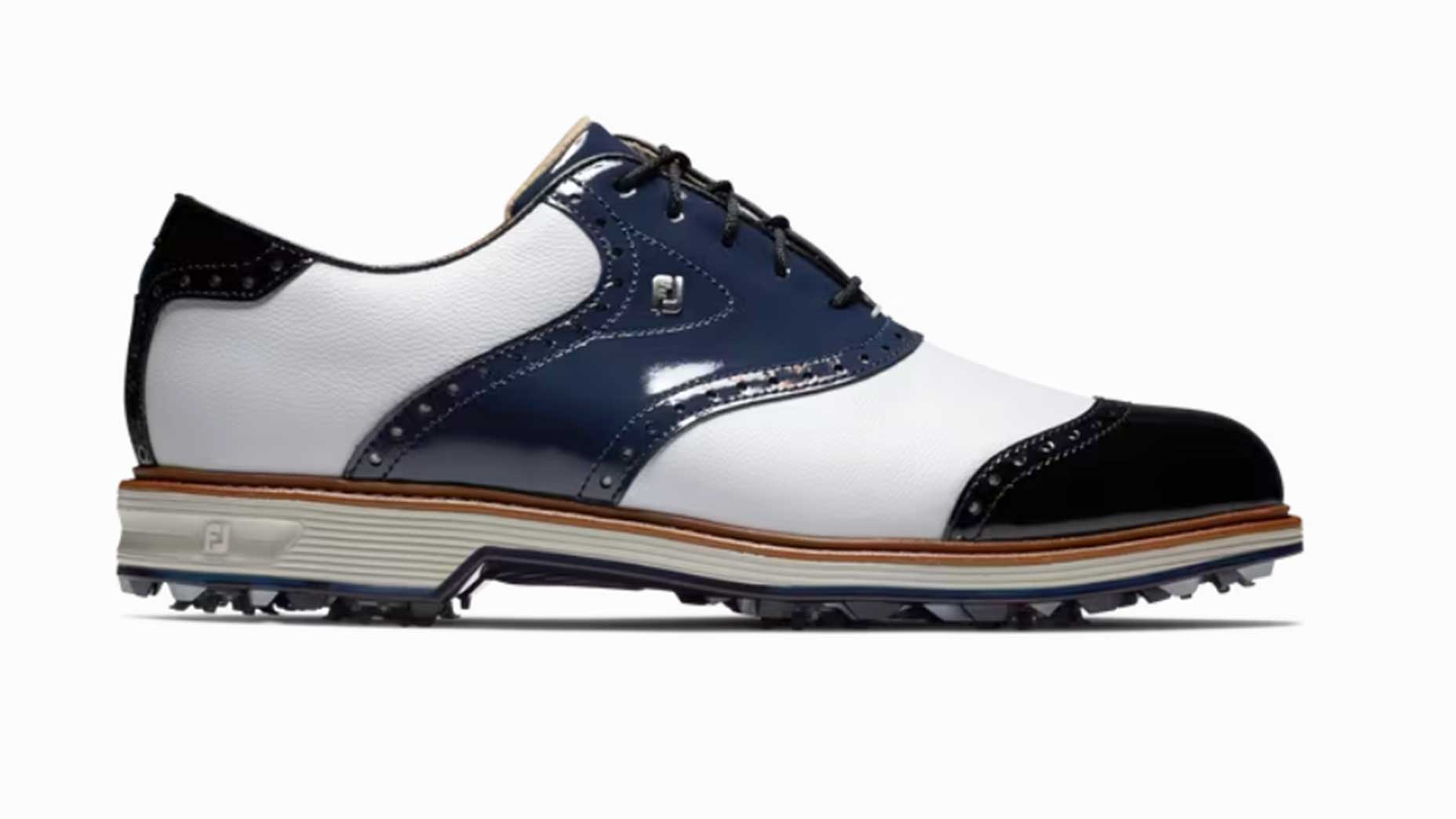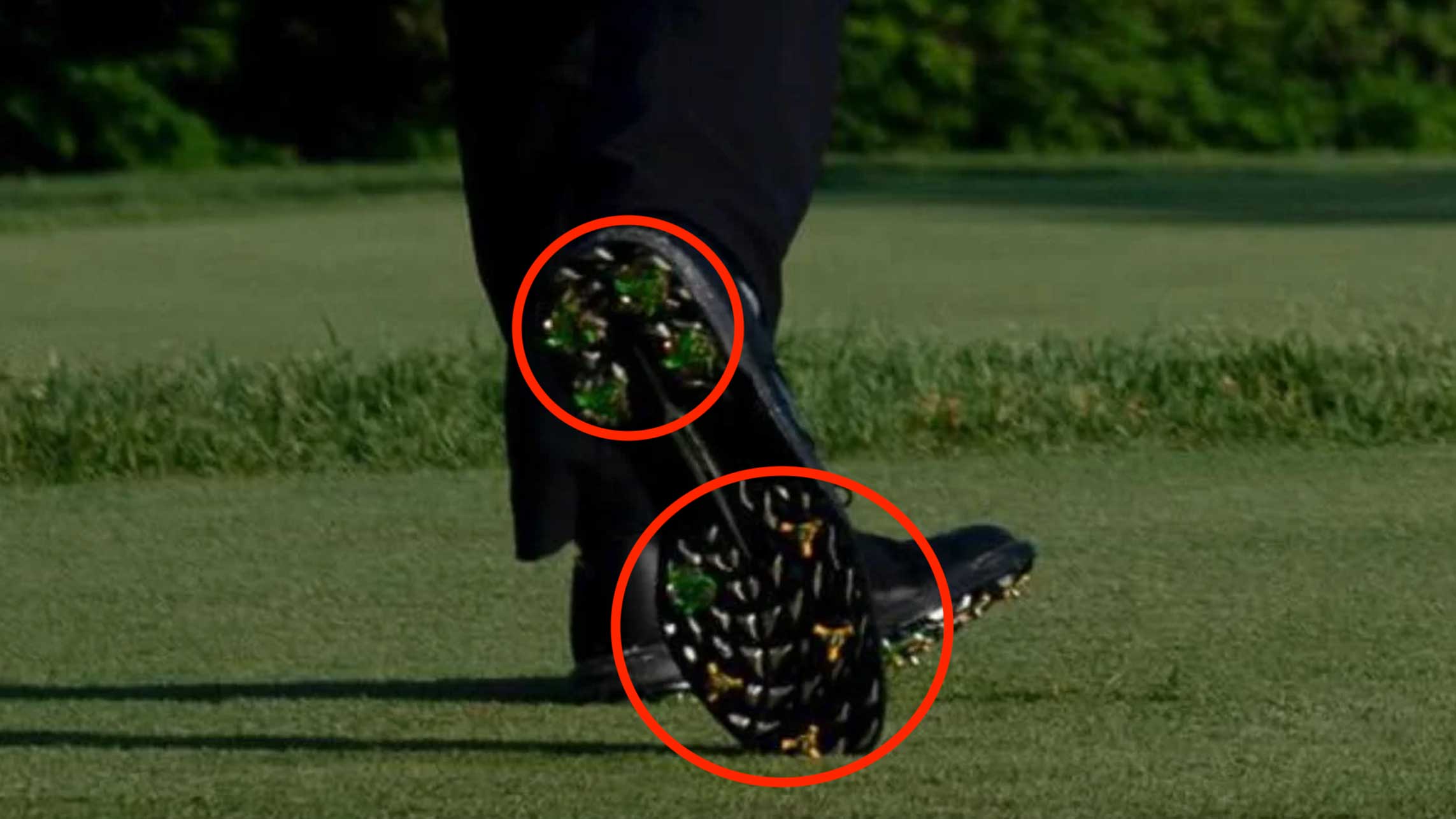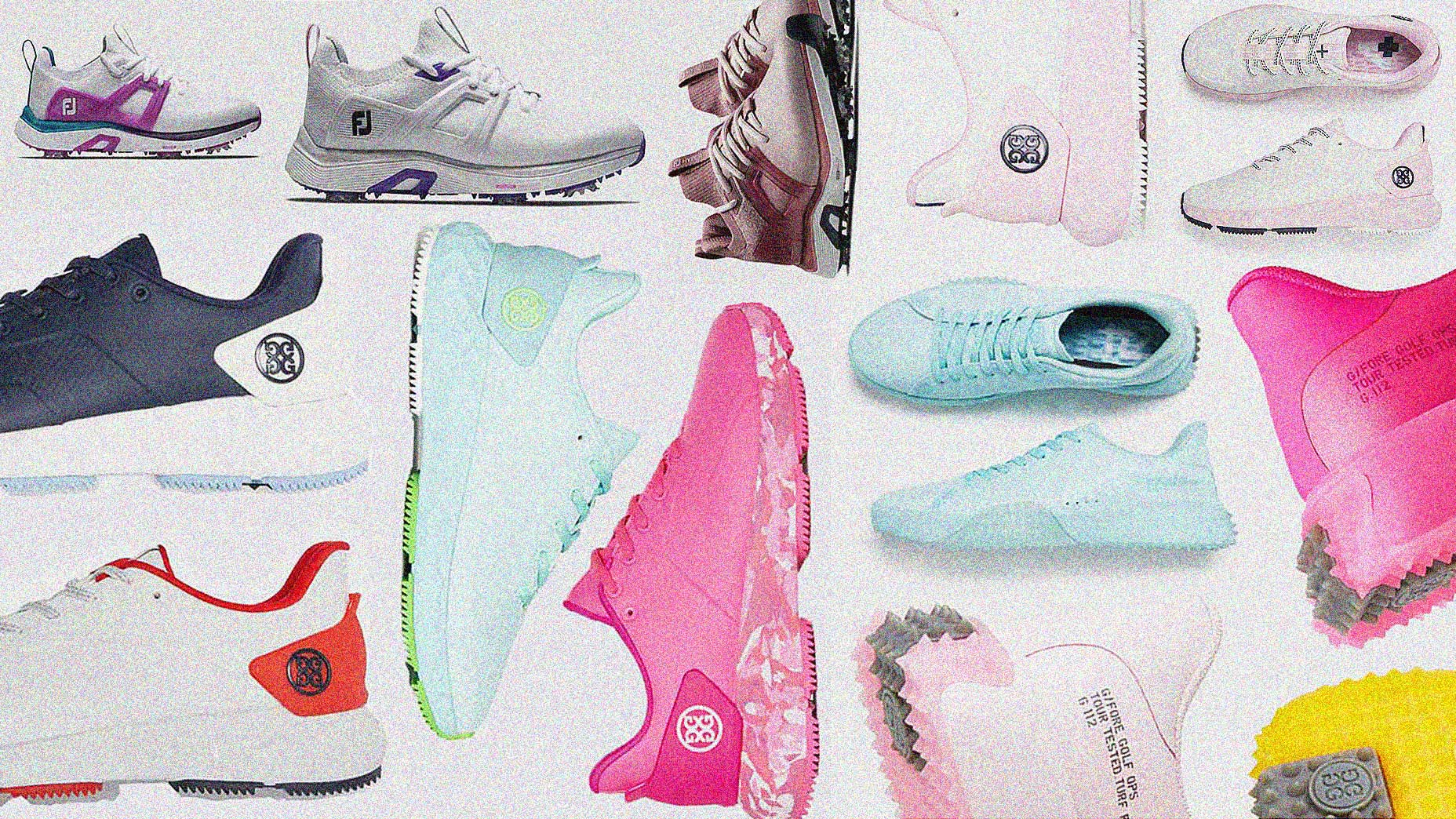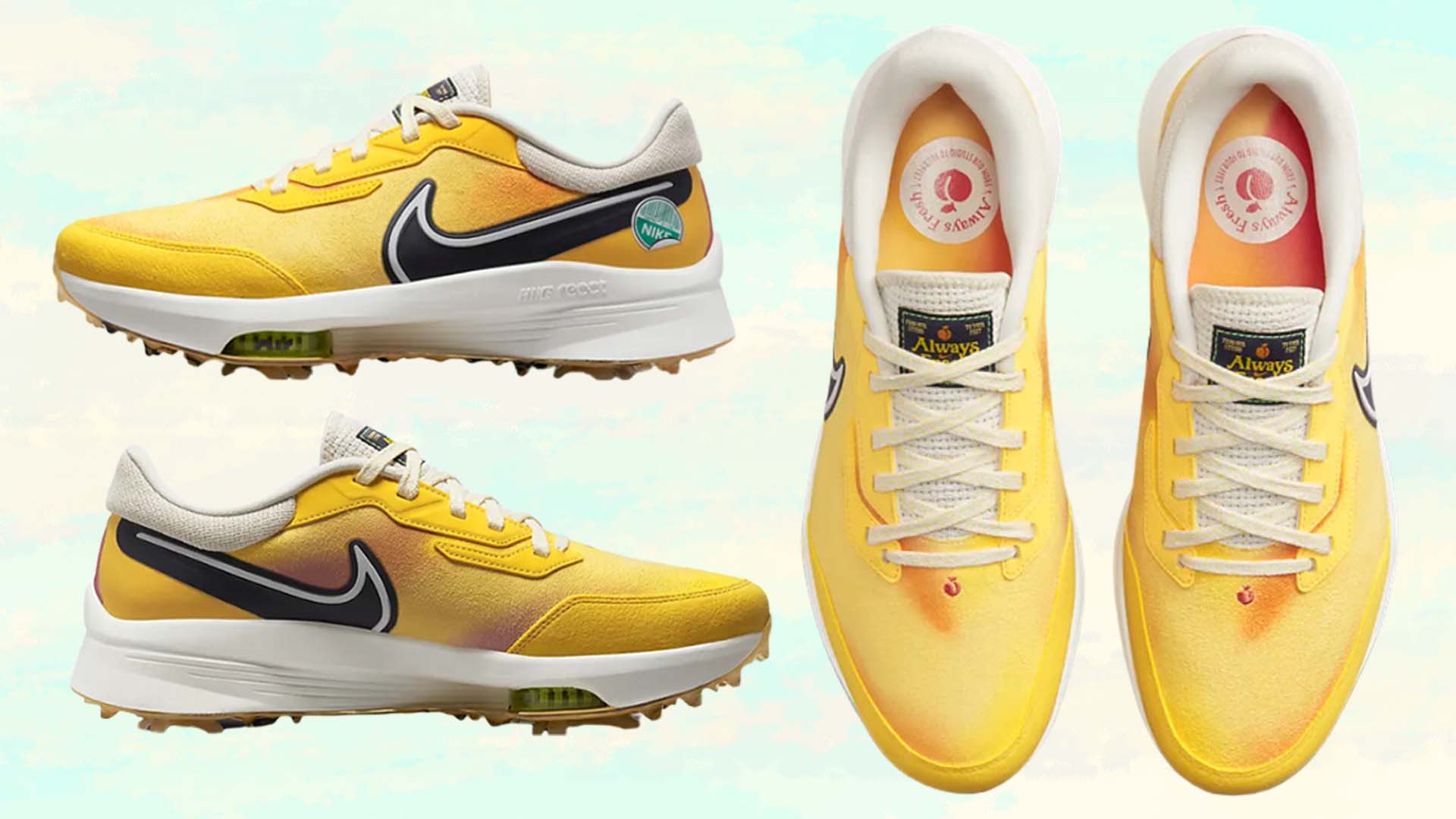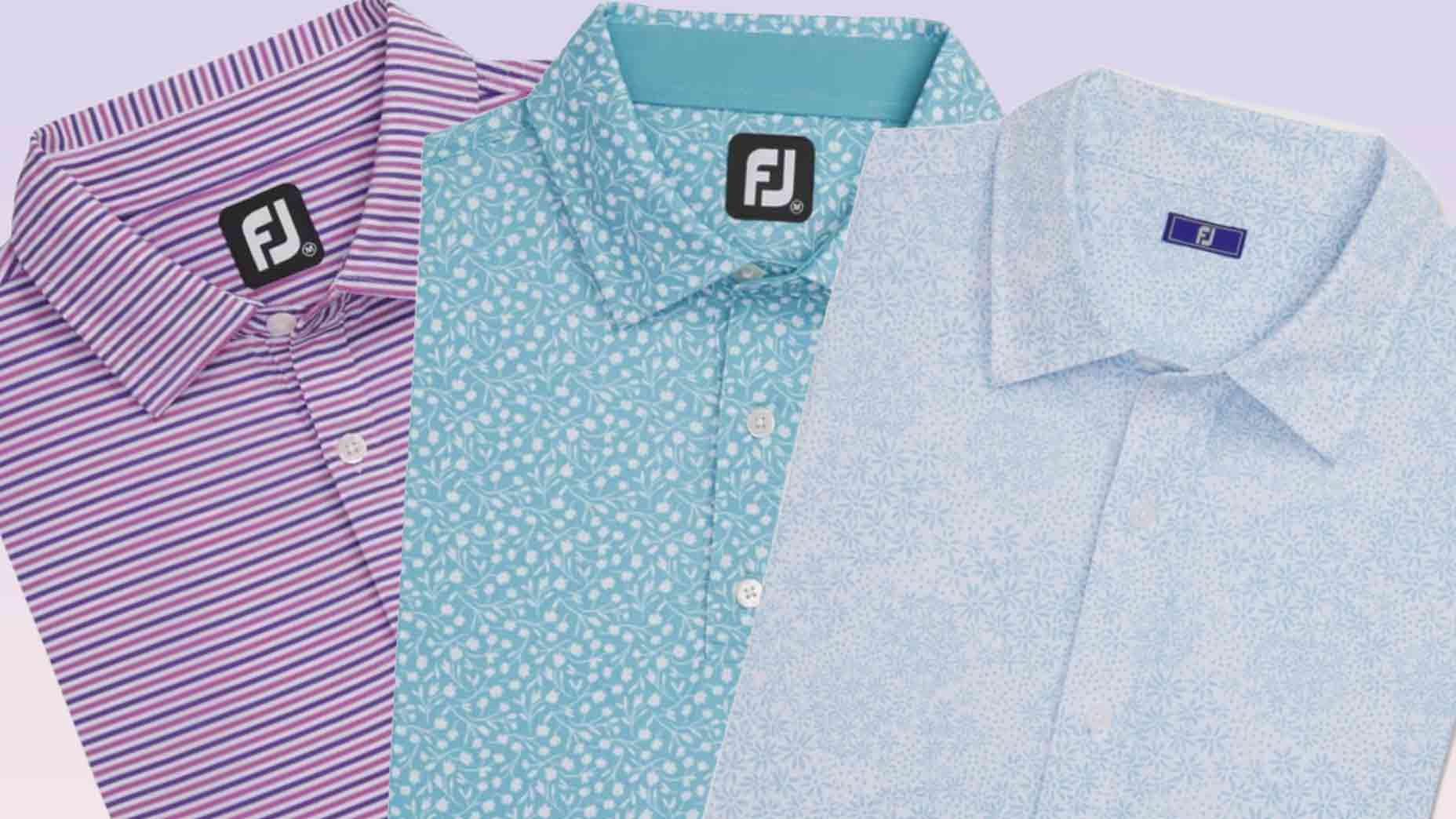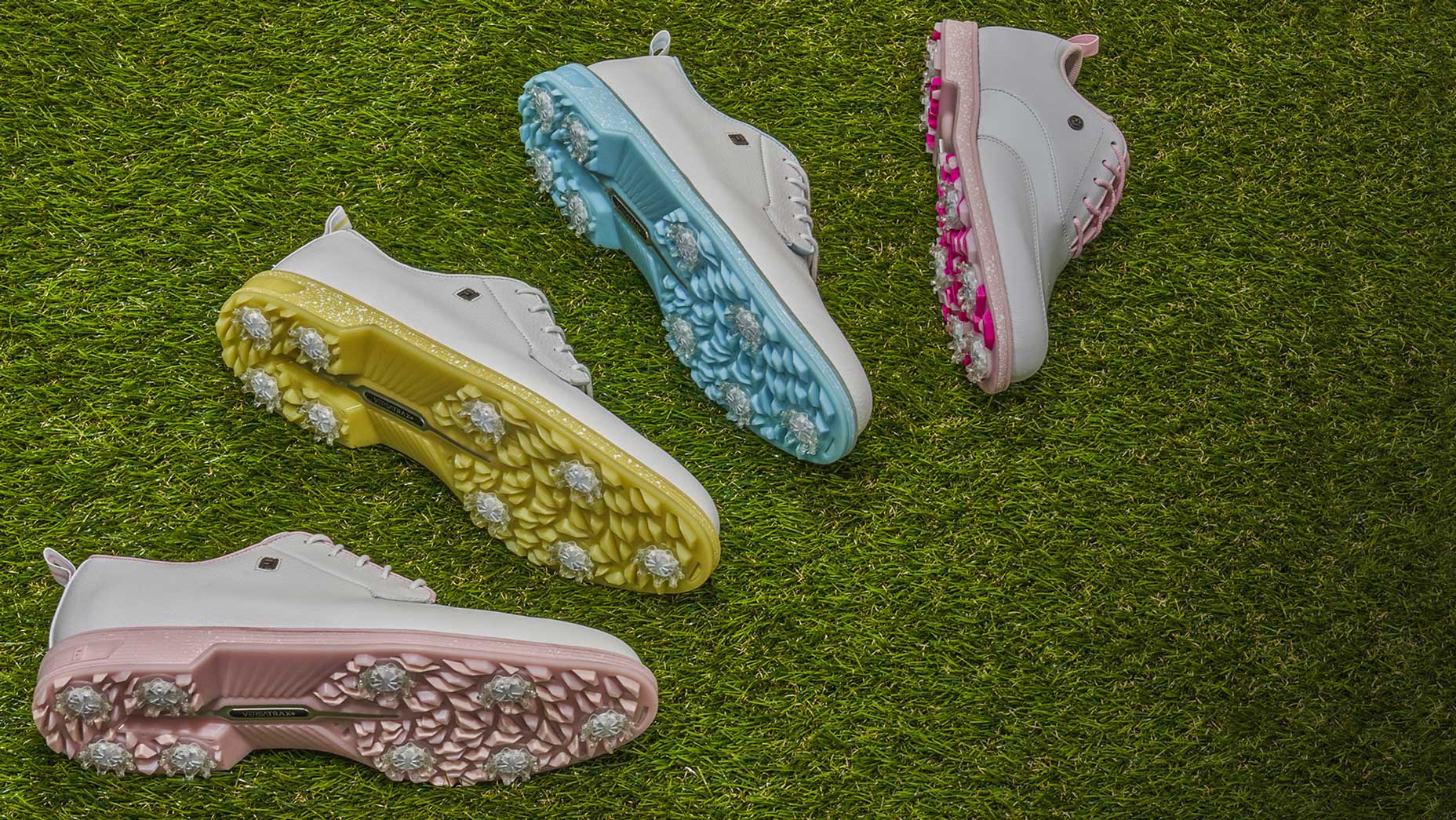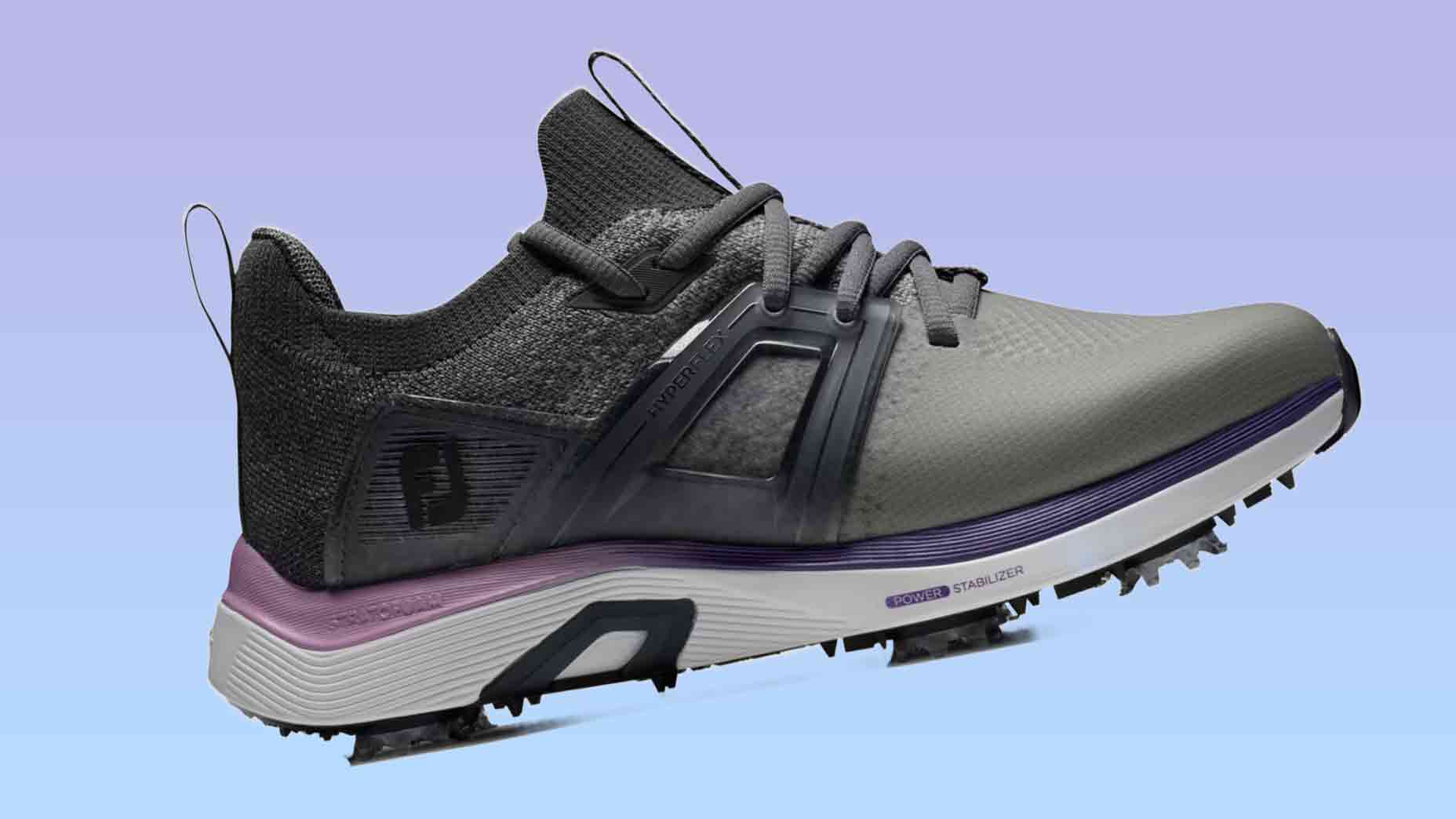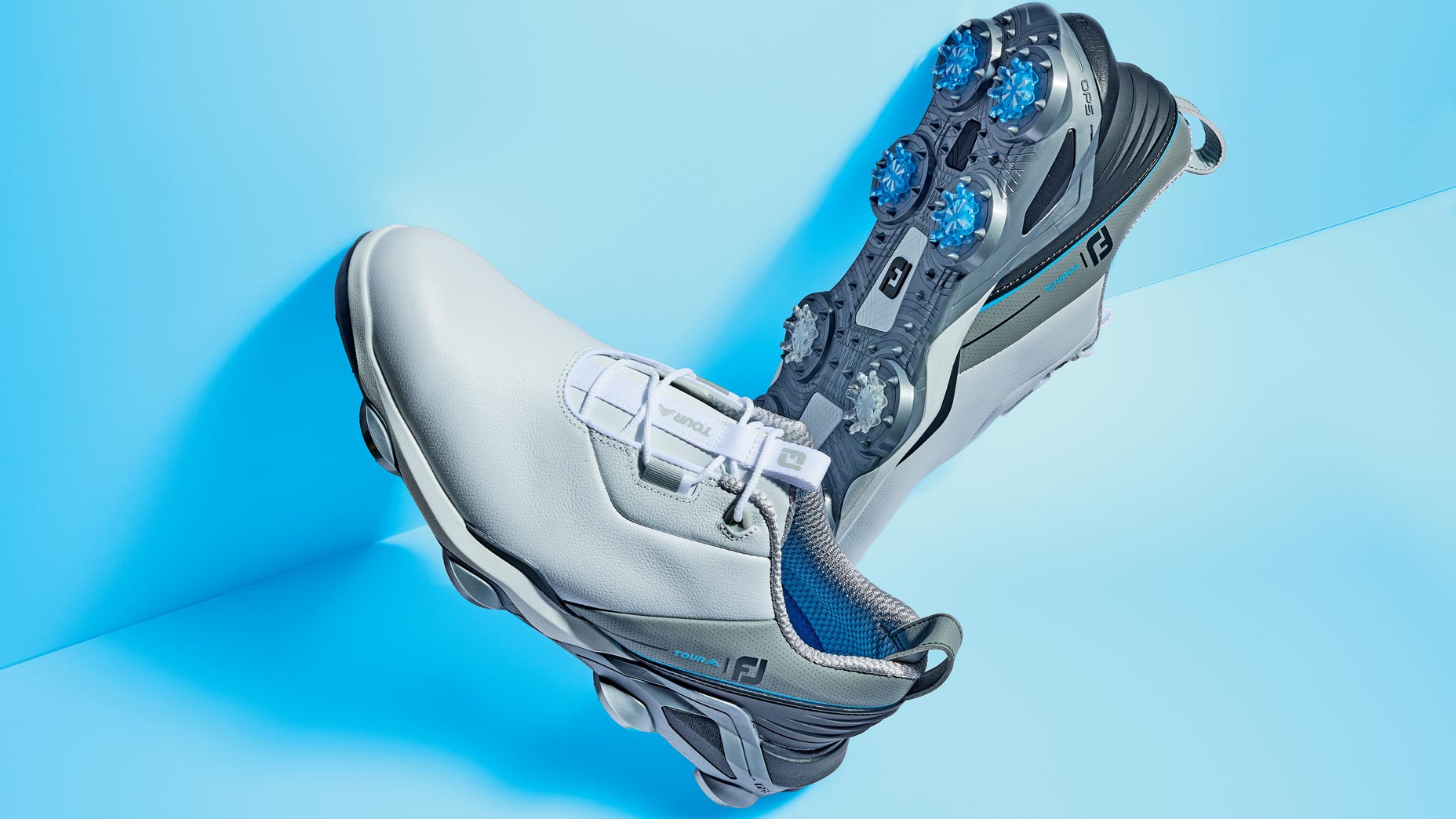Inside FootJoy’s century of strides for golf’s most daring and dominant shoemaker
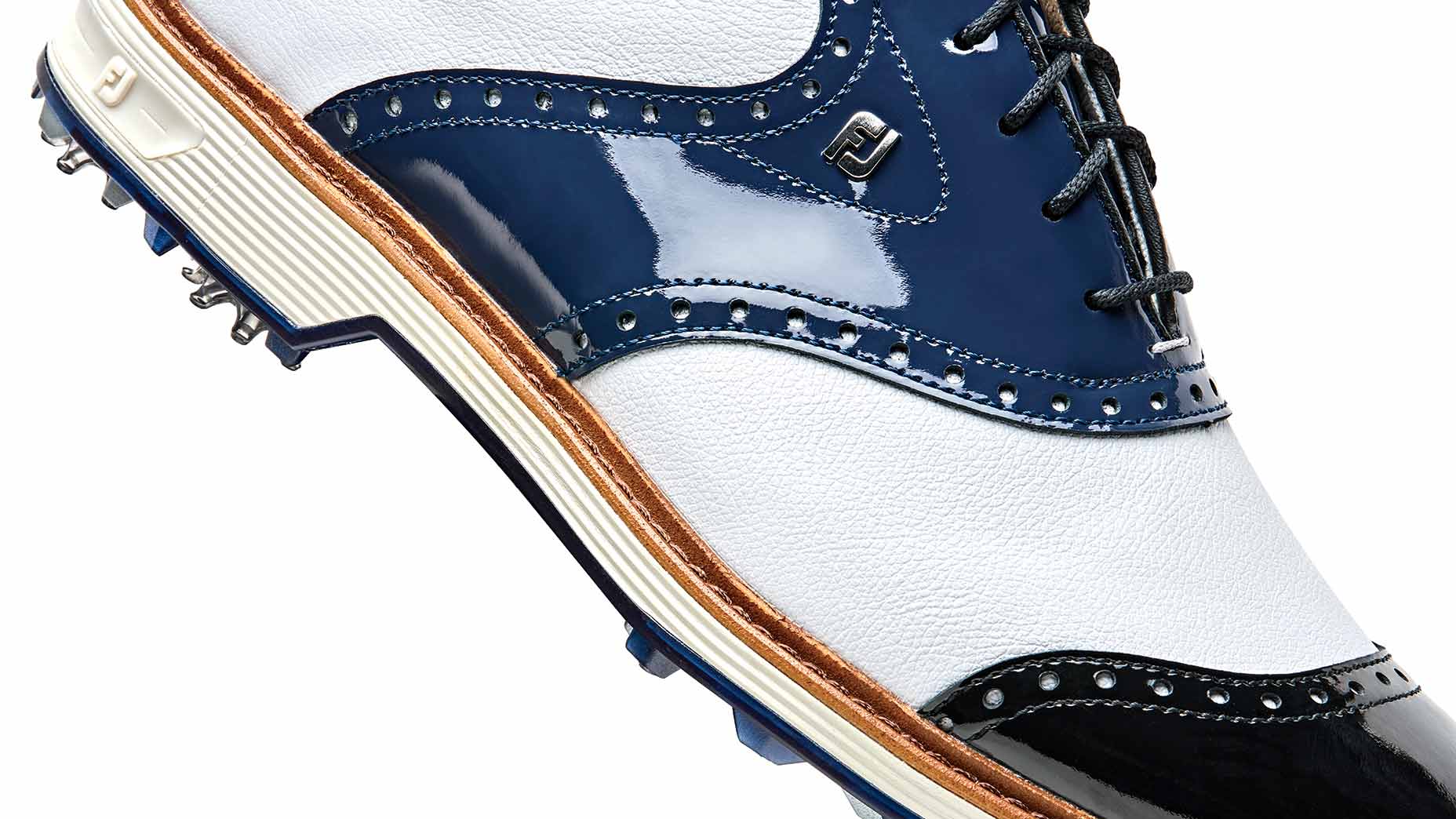
FootJoy, the shoe-manufacturing stalwart, hits the century mark this year. Walk with us on a stroll down style and innovation lane.
Courtesy FootJoy
Perley Flint. There’s a name you’d remember, right? In 1910, this young Harvard graduate joined the venerable Burt and Packard Shoe Company of Brockton, Mass., the footwear production capital of the world. A passionate golfer, Flint loved to tinker with new, sport-specific designs, from shoe shapes to spike patterns to weight reduction.
By the early 1920s, the company, then Field and Flint, had a well-established reputation for innovation and quality. Marketing, not so much. Shoes and features with names like the “Anatomik,” “BurroJap,” “Burtine,” “Korrect Shape” and “Skreemer” just weren’t catching on. Go figure.
So, in 1923, a century ago — a world war, a depression, more than a dozen recessions and a global pandemic ago — the company conducted an in-house naming contest for a new feature being considered for an upcoming line of shoes. Alas, the name of the woman in the stitching room who came up with the winning moniker has been lost to history, but she took home a then-whopping $50 prize for, yes, “FootJoy.” (Actually, those being fussier times, the original spelling was “Foot-Joy.” The hyphen was dropped in 1997.)
FootJoy Premiere Series – Wilcox
This proved the beginning of what would become golf’s longest-running shoe brand, and one of the game’s most successful and innovative brands, period. More than 8,000 worldwide wins later, and 77 years straight at No. 1 since the PGA Tour took its first golf shoe count in 1945, FootJoy has earned the love and trust of extraordinary and ordinary players and — as the brand embarks on its next hundred years — this special look back at its remarkable first century. Perley Flint would be proud.
A FootJoy timeline
1923: The FootJoy name comes into being via a naming contest at the Field and Flint Company.
1925: “FootJoy Features” debuts; “Features” is soon dropped and the tagline “A shoe that’s different” added.
1927: A local FootJoy rep convinces Walter Hagen, U.S. captain of the first Ryder Cup team, to have his players wear the brand during competition at nearby Worcester CC.

1928: Johnny Farrell, a member of that 1927 U.S. Ryder Cup team, wears FootJoys in the U.S. Open at Olympia Fields, where he beats Bobby Jones in a 36-hole playoff and delivers the brand its first-ever professional victory.
1945: FootJoy garners the top spot on the PGA Tour, a position it hasn’t relinquished.
1957: Brothers Bill and Dick Tarlow buy the company, consolidate all manufacturing into their large factory in Brockton and decide to focus FootJoy exclusively on golf.
1979: FootJoy enters the glove business with the PowerStrap, a line extension of the top-selling PowerStrap shoe.
1980: The company begins a long-standing relationship with Pittards of England, thus allowing FootJoy to develop a glove using water-repellent cabretta leather.
1981: FootJoy’s StaSof glove launches with exclusive tannage from Pittards of England, featuring innovative moisture-management properties. The same year, the company enters the golf sock business.
1983: StaSof reaches No. 1 in sales and on Tour, and 40 years later remains the Tour’s top cabretta leather glove.
1989: The waterproof DryJoys golf shoes launch.
1996: The cool-weather WinterSof and wet-weather RainGrip niche performance products debut to extend the playing season.
1997: The company enters a new category with DryJoys Performance Outerwear and, via an alliance with SoftSpikes, Inc., becomes the first brand to integrate soft-spike technology in its footwear.

1999: The beloved “Sign Boy” marketing campaign begins a successful eight-year run.
2001: FootJoy launches the Contour Series franchise, which, at its height, accounts for nearly 15 percent of all golf shoes sold in the U.S.
2003: MyJoys, the first customizable golf shoes, make their debut and include personalization capabilities and unique leather options.
2006: The BOA Lacing System debuts as a feature in the ReelFit shoe, allowing golf shoes to be securely fastened via the turn of a dial, without traditional laces.
2008: The high-end PureTouch Limited golf glove launches and quickly gains popularity among elite players.
2010: The brand secures the No. 1 position in the rainwear category.
2012: It enters the full-line men’s golf apparel market, focusing on the avid player and signing Steve Stricker as its first brand endorser.
2015: Surpasses 250 million gloves sold worldwide.
2016: With the launch of FJ Golfleisure, FootJoy expands into women’s performance apparel.
2018: The handcrafted, luxury performance FJ 1857 shoe makes its debut.
2021: FJ modernizes the classics category with the Premiere Series, which instantly becomes the No. 1 shoe on Tour, thanks to adoption by Justin Thomas, Max Homa, Will Zalatoris and others.
2023: FootJoy turns 100.

